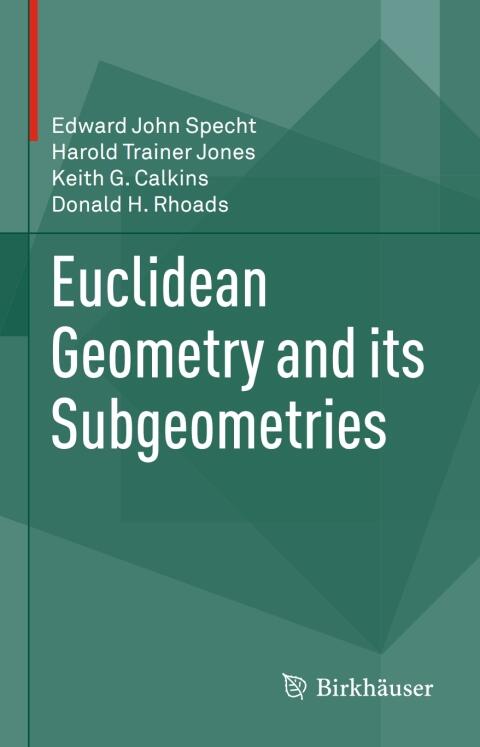
Euclidean Geometry and its Subgeometries
작성자
Edward John Specht
,
Harold Trainer Jones
,
Keith G. Calkins
아직 평점이 없습니다
History
Philosophy
형식
킨들
페이지
548
언어
영어
출판됨
Jan 1, 2015
출판사
Birkhäuser
판
1st ed. 2015
ISBN-10
3319237756
ISBN-13
9783319237756
설명
Exploring the foundations and evolution of Euclidean geometry, this monograph delves into the intricacies of mathematical structures that have shaped our understanding of space and form. The authors, skilled in their respective fields, embark on a journey that reflects both the historical significance and contemporary applications of geometric principles. By uniting classical theories with modern interpretations, they provide readers with a rich tapestry of knowledge that is both informative and engaging.
Throughout the work, the text emphasizes the logical coherence and elegance of Euclidean geometry, examining its fundamental axioms and theorems while also considering various subgeometries that arise from these foundational principles. The discussions are meticulously crafted, bridging the gap between theory and practice, allowing readers to appreciate the beauty of geometric reasoning in contemporary contexts.
Each chapter is designed to illuminate the relationships and interdependencies among different geometric systems, encouraging a deeper understanding of their unique characteristics and contributions. The authors not only elucidate complex concepts but also motivate a sense of inquiry, inviting exploration beyond traditional boundaries.
With a blend of rigor and accessibility, this monograph stands as a valuable resource for both students and seasoned mathematicians alike, fostering a greater appreciation for the timeless relevance of Euclidean geometry in the evolving landscape of mathematics.
Throughout the work, the text emphasizes the logical coherence and elegance of Euclidean geometry, examining its fundamental axioms and theorems while also considering various subgeometries that arise from these foundational principles. The discussions are meticulously crafted, bridging the gap between theory and practice, allowing readers to appreciate the beauty of geometric reasoning in contemporary contexts.
Each chapter is designed to illuminate the relationships and interdependencies among different geometric systems, encouraging a deeper understanding of their unique characteristics and contributions. The authors not only elucidate complex concepts but also motivate a sense of inquiry, inviting exploration beyond traditional boundaries.
With a blend of rigor and accessibility, this monograph stands as a valuable resource for both students and seasoned mathematicians alike, fostering a greater appreciation for the timeless relevance of Euclidean geometry in the evolving landscape of mathematics.



















